HTC One A9 Review
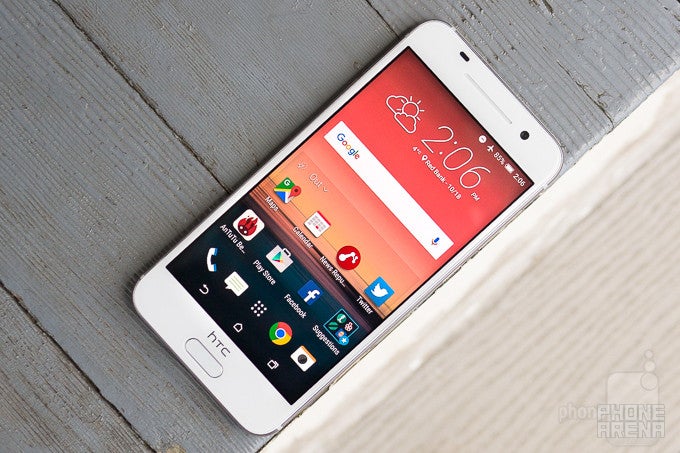
Introduction
Oh HTC, where have you been all year? After the unveiling of the HTC One M9 earlier this year, the company has been relatively quiet. To be fair, however, the company has been garnering attention in the virtual reality space with the HTC Vive – so yeah, there’s still anticipation for that. Going back to the M9, though, it was undoubtedly one of the first major phones of 2015, but it didn't seem to get the attention it deserved.
Many folks point to an inevitable demise for the once acclaimed phone maker, but HTC begs to differ as we’re diving ever so closer to that crucial time of the year; the holiday season. Going back to the drawing boards, the company that’s highly esteemed for its impeccable designs, takes everything it knows from its Desire and One lines, and combines it together in its new HTC One A9 – a redefined phone that’s hailed as the company’s new flagship in the US market.
This year alone, we’ve seen phones from every side of the spectrum – from premium-priced ones that impress with their incredible performance, to budget ones that still manage to pack some punch. The HTC One A9 is a very different phone for the Taiwanese company, seeing that it combines that premium build quality we’re accustomed to seeing, with a price point that aims to appease a wider set of consumers. Can this new venture help swing HTC back into the limelight?
Design
If you’re to talk to HTC directly, they would argue that they’ve come up with the ultimate design with the One A9, as it combines the ‘flatter’ characteristics from its Desire line with the smooth, all-metal design from its One line. Still, nearly everyone we showed the phone to initially mistakes it for the iPhone 6/6s, where the similarities are undoubtedly uncanny.
The flat front and back surfaces of the HTC One A9 offer uniformity to its design, while the home button, earpiece, HTC logo, and camera lens are all positioned directly towards the middle for balance. Strangely, though, the microUSB port is just a smidgen offset.
There’s no shortage of high-level feel here, as the phone sports that lovable all-metal design that we’ve come to expect from its designers. It feels great in the hand, thanks in part to the dual brushed and bead-blasted finish of its metal chassis – while being accentuated by its polished sidewall. What makes it even better is that it’s pretty comfortable to hold in the hand, compared to some of today’s ginormous-sized devices, offering effortless one-handed operation. Its metal body is accompanied with a bit of substance to its weight, but it’s something that’s warranted to give it that sturdy feel.
The entire package is a seamless design that doesn’t have many compromises, with the exception of how it very well looks like an iPhone. We can argue who did what first, but at the end of the day, it’s almost guaranteed to be mistaken for an iPhone in public.
Minor design improvements have been carried out on its power button, which offers a rigid feel over the smooth finish of the nearby volume controls, enabling us an easier time distinguishing it with our finger. At the same time, though, most HTC faithfuls will be shocked to know that the A9 forgoes having those dual front-firing speakers that have been a staple feature in the company's phones – replaced instead by a single speaker grill on its bottom edge.
Adding to that, they’ve brought on a capacitive home button below its display. It manages to be up-to-date by doubling as the phone’s fingerprint sensor as well. And boy does it work pretty well by offering the same lickety-split, accurate response as some other, top-tier sensors. Best of all, the addition of the fingerprint sensor means that it’s Android Pay compatible.
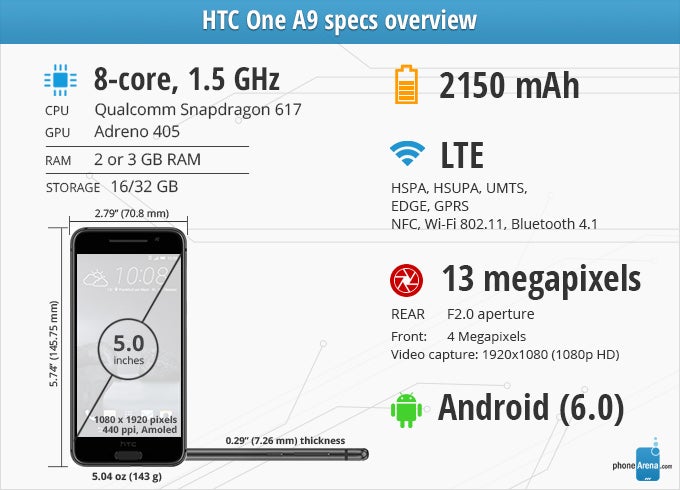
Display
Say goodbye to Super-LCD, hello AMOLED!
A tradition of sorts for HTC, they’ve favored Super-LCD technology for its displays, but in a strange turn of events, they’ve gone to the dark side by choosing to put an AMOLED panel in the A9. This reversal of sorts is undoubtedly surprising, but not entirely so, because it’s actually not the first time it has opted to go with AMOLED, as the DROID Incredible, Nexus One, One S, and a couple of other phones in its portfolio have used it in the past. Still, it’s just an odd revelation – more so when this phone is already greeted with rogue qualities.
Visually, this 5.0-inch 1080 x 1920 AMOLED display looks great. It comes with two available color modes: one that gets you inaccurate but oversaturated colors, and one that enables a more natural type of image. These are complemented by bright viewing angles and the trademark perfect black color, making for a contrasty, dynamic look.
While its color production is on the exaggerated side when it’s on the AMOLED profile, putting it on the sRGB profile actually tones it down to offer accurate, true-to-life colors, with just a slight hint of a dominant blue.
As a result, its 6800K color temperature is very close to achieving that ideal 6500K reference value. The only downside here with the screen is its peak luminance of 356 nits, which makes it troublesome to view outdoors with the sun present. Simply, it washes out tremendously, making it impossible to see without shielding it.
Who knows if this is just an indication of what’s to come from HTC going forward. By itself, the A9's screen is a different approach for the company – one that seems to work better for us, compared to their latest LCD panels, such as the one we saw on the One M9.
Interface and Functionality
Sense is sensible, backed by the power of Android 6.0 Marshmallow from the get-go.
Sense has always been one of the better looking custom Android skins. It’s never been overpowering, nor does it come off cartoony – so in a sense, Sense is sensible. For the HTC One A9, however, there’s nothing that points to any significant changes that we haven’t been exposed to already with the M9. So yeah, it’s essentially the same Sense 7.0 experience. Meaning, continued favorites like HTC BlinkFeed (aka Highlights), HTC Zoe, Sense Home, and those Motion Launch gestures make an appearance once again. And yes, it even offers a personalization element with its downloadable themes.
Upon further inspection, though, it’s just one apparent thing that jumps out at us the most – and that’s the fact it’s running on top of Android 6.0 Marshmallow. Yup, it’s that fluffy new Android experience that’s front and center with this one, which is impressive considering it’s the only new Android phone besides the two new Nexus phones to have it. While it only adds some minor alterations to the UI, such as the switch to going with stock Android’s notifications panel and scrollable Recent Apps menu, it comes with all of the new features of the platform.
Out of the entire bunch, the most notable thing here is arguably the Now On Tap instant access feature – whereby holding down on the on-screen home button at any time launches the feature. Whatever we’re doing or looking at with the phone, it scans and delivers relevant information pertaining to it. Overall, the experience by and large is similar to that of the M9, but it doesn’t have the same side-by-side multi-tasking punch we get in other custom experiences. For what it’s worth, the straightforwardness of Sense is appreciable.
Considering that Sense takes pride in its modern-looking design language, it’s no surprise that Google’s Material Design is also validated in all of the built-in apps. Therefore, we get bright and bold color schemes to match their straightforward functions.
Stock Android arguably eliminates the need to have two different email clients, as most phones now automatically give the Gmail app the sole duty of handling all email accounts, but the A9 continues to offer a separate HTC Mail app for those who just prefer having things differentiated. That’s an option to the user, of course, but you can always choose to go all-Gmail for your emailing needs.
The Sense keyboard comes at us with the usual flair, dishing up the same amount of responsiveness as the M9. Partly attributed to its smaller screen size, typing up is a breeze knowing that we don’t have to do a whole lot of stretching with our thumbs. Alternatively, we still have the trace option to input text via one seamless swipe-like gesture with our finger.
Processor and Memory
The A9 features the new Snapdragon 617, which disappoints in the graphics processing department.
It’s a strange affair for the A9, more so when it’s being hailed as HTC’s new flagship phone in the US, effectively replacing the M9 in the process. What’s interesting is that the A9 doesn’t get greeted to what most people associate to be the most fearsome chipset from Qualcomm – the Snapdragon 810. As a matter of fact, it's not even the hexa-core Snapdragon 808. Rather, the A9 employs a very new, yet decidedly mid-range piece of silicon from Qualcomm – the 64-bit octa-core Snapdragon 617 SoC.
This particular configuration breaks down to four Cortex-A53 cores that are running at 1.5GHz, and another four A53 cores that are at 1.2GHz. Accompanied with 2GB of RAM and the Adreno 405 GPU, this entire package isn't as ambitious as what most high-level offerings come with, but it should be enough to get the job done. Indeed, this new chipset delivers decent performance for base level tasks.
But even though it’s tough to differentiate its performance against the M9 when it pertains to trivial operations, the A9 just doesn’t have the same raw performance that gave the M9 incredible movements with graphics processing. Quite frankly, it suffers in the gaming department – where it fails to achieve the high frame rates of the M9, giving us a choppier performance.
Here in the US, HTC is only making available a single model for the A9 – one that comes with an acceptable 32GB of internal storage. Luckily, they’re including a microSD card slot as well for those who need more flexibility.
Internet and Connectivity
There are no disappointments with the web surfing experience here with the A9. Google’s Chrome browser is given the sole duty of handling the task at hand, and of course, it suffices here with the A9 due to its speedy page loads, smooth navigational controls, and ample sized screen. Well, this shouldn’t be a surprise considering it’s pretty rare nowadays for a smartphone to falter in this category.
Although a bunch of the US carriers will be selling their particular variants, HTC will be selling an unlocked model directly through its site – where it’s enabled to work for the various GSM networks around the world. What’s especially astounding about this is that it’ll even work with Verizon’s LTE network for voice and data, despite it lacking any of the legacy CDMA technology needed to operate on Big Red’s older CDMA footprint in the US. Effectively, the HTC One A9 is the first phone to work on the carrier’s network without technically offering CDMA radios.
In addition to that exciting treat, the A9 comes with all the usual connectivity features – like aGPS with Glonass, Bluetooth 4.1, dual-band 802.11 a/b/g/n Wi-Fi, and NFC.
Camera
Finally, HTC manages to get it right with the A9’s still image performance – not so much with the video recording, however.
HTC has steered away from the idea of using the UltraPixel tech for its main cameras for good – the One A9 rocks a 13 MP sensor for its rear camera, assisted by optical image stabilization for those dynamic or low-light scenarios. It’s paired with an f/2.0 aperture, sapphire crystal lens, BSI sensor, and a two-toned dual-LED flash. Unfortunately, though, there's no 4K video recording. The 4.1-megapixel UltraPixel tech, instead, can be found on the front – where the phone's selfie snapper employs HTC's signature tech to provide superior performance in low-light scenarios.
The camera app does not fall behind the competition and offers a Pro mode, granting the user control over ISO, shutter speed, and white balance. However, we wish its max shutter speed were longer than 2 seconds. The One A9's camera can also capture RAW images, allowing those who are a bit more knowledgeable edit their own photos post-shot. Alternatively, one can use the phone's own Photo Editor, which has a one-tap enhancer that auto-corrects RAW images. In addition, the phone also allows video edits, such as hyperlapse and slow motion, allowing users to create various dramatic effects in clips. And finally, HTC's Zoe app is also on board, making the creation of quick collages a breeze.
Image Quality
HTC has been criticized in the past for the lackluster performance of its cameras, partly including the M9. That, of course, adds more pressure for the A9 to produce better-than-average results. And to its credit, the A9 prevails in a solid fashion!
Generally speaking, it produces some sharp looking shots when the conditions are ideal. Details are plentiful and sufficient – one can easily notice individual blades of grass in the foreground in some of the shots, while the colors that are being produced are mostly natural looking. Close-ups are handled effectively, too, but when comparing its quality to the Nexus 5X, it’s just a smidgen hazier looking. Dynamic range is handled decently for the most part, but when there’s just too much contrasting light in the shot, its HDR mode does nicely to compensate things. Yes, it receives a bump in contrast and color saturation, but it’s not to the same overpowering degree we get in some Lumia smartphones, for example.
Under low light, we’ll certainly agree that it takes some acceptable photos. The A9’s performance does tend to be a bit on the under-exposed side, though. It also tends to be somewhat prone to blurring, resulting in some shots appearing softer and out-of-focus.
Call it a long time in the making, but it seems as though HTC has finally gotten the recipe right with the A9. Remarkably, it’s a solid offering from them, easily rising to the top of the charts in HTC’s portfolio.
Video Quality
While we’re pleased with the enhancements made to its still image quality, the A9’s video recording performance fails to impress. Yes, there's lack of 4K video recording support, but this would have been OK if the 1920 x 1080 recording was good enough. Sadly, it isn't.
First and foremost, its constant focus hunting action is a bit distracting – it’s just constantly sniffing out and never settling on one thing for a long period of time. Secondly, there’s not a whole lot of definition when it comes to its detail capture. And finally, it’s exceptionally noisy and blurry looking with its capture under low light.
Indeed, HTC makes some great strides in the still image department, but here with video capture, it’s just a disappointment everywhere.
Multimedia
Even though it says goodbye to those dual front-firing speakers, the single one here manages to perform decently.
Those who regard themselves as being extremely creative will adore what the A9 has to offer with its Gallery app. When it comes down to it, HTC offers a myriad of editing tools at our disposal to give images both a professional and artistic touch. Artistic elements are achieved by using the shapes, photo shapes, and prismatic effects – while things like the double exposure effect adds that professional grade touch by combining two photos together. There are some fun modes as well, like face fusion, which takes two portrait shots and mixes them together.
Shockingly, the Sense music player is gone! This is surely a shocking turn of events for any HTC faithful, because the Sense music player has been a common staple in HTC’s phones. The duty is now all placed on Google’s Play Music app. Love it or hate it, there’s nothing out of the ordinary with this one.
Trying to get over the fact that the Sense music player is no longer offered out of the box with the A9, it’s equally as tough trying to believe it’s a part of the One series without those dual front-firing speakers on previous phones. Going with only a single speaker configuration, it manages to produce an acceptable 72.3 dB of power, which is close to the M9’s mark of 72.8. Honestly, the quality is still crisp and clear on the loudest volume setting – so it’s effective to cover confined spaces.
Even though the HTC One A9 doesn't have stereo front-firing speakers like the One Mx series used to have, however, BoomSound has still found its way to the new phone. This time around, it’s incorporated with the headset that comes with the phone, combined with Dolby Audio surround tech. The A9's headphone amplifier is said to deliver “double the output” of other handsets, which should give users more headroom for superior dynamics. In our experience, there’s a great deal of fidelity with its quality – ensuring that there’s enough substance to back up its punch.
Call Quality
Besides the underpowered speakerphone, everything is pretty okay with its call performance.

Battery
Due to its smaller battery size, it’s no surprise that its battery life is short.
Right off the bat, its 2150 mAh battery cell is alarming. With its size alone, it makes us pessimistic about its longevity, especially when batteries around the 2500 mAh range are regarded as insufficient with today’s modern phones. And true to that claim, the A9 sputters out to deliver nothing more than an average-like performance. In our real-world usage, it’s effective in lasting us a solid one day. Power users, on the other hand, will need to give it a good charge after an 8-hour work day.

However, the A9 is pretty fast with its recharge time. Using a 1.5A charger, it only takes 110 minutes to achieve full charge, which is pretty fast, but nothing extraordinary compared to class leaders like the Note5 or Moto X Pure Edition, which both offer significantly larger batteries. With support for Quick Charge 3.0 on the horizon, that recharge time can potentially be improved.
Conclusion
HTC apparently views a flagship device very differently from the competition. Normally, these so-called flagships would be showcase devices rich in new technology, offer exceptional performance everywhere, and just premium built. With the HTC One A9, however, it redefines the term for the company.
In comparing it to the M9, the A9 will be regarded by many as being more of an upper mid-range smartphone – partly because we know what kind of specs are needed to entail a flagship phone from the competition. HTC faithfuls, in particular, will most likely be filled with that shock-and-awe feeling with the A9’s aggressively unconventional approach.
Still, this is one solid smartphone – backed up by its premium choice of materials, sturdy construction, and clean finish. Here in the US, the A9 is able to stand out for its $399.99 outright cost through HTC directly, which makes it affordable enough for what it offers. However, word on the street is this is a limited-time price which is expected to go up with about $100 in the near future. This sure is going to turn the One A9 into a tougher sell. Its exterior is of top-notch quality, but the processor sure leaves something to be desired.
Finding itself in an interesting position price-wise, it’s competing in a crowded space that has seen notable waves in the last few months from devices like the ZTE Axon Pro, OnePlus 2, Moto X Pure Edition, and Google Nexus 5X. All of them offer tremendous value below the $400 threshold and are backed up by specs that easily eclipse the HTC One A9 in many aspects. In retrospect, the A9’s size and premium design are arguably its strongest assets – whereas most of the other aforementioned phones are just bigger, more cumbersome to manage.
Go with the HTC One A9 for that particular reason, which interestingly enough, is what HTC has constantly built its reputation around time-after-time with its flagships. HTC’s regard for what a flagship smartphone should be might be different from everyone else, but if they’re able to carefully use this new opportunity to their advantage, it’s plausible that this might be the beginning of a reversal for the company’s handset division.
Software version of the review unit:
Android version: 6.0
HTC Sense version: 7.0

Follow us on Google News
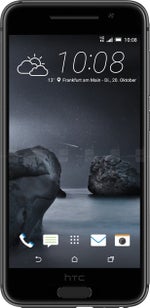

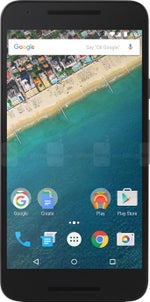



















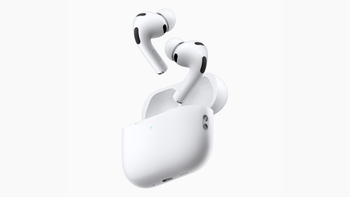
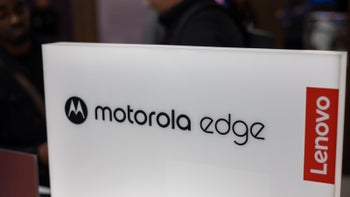


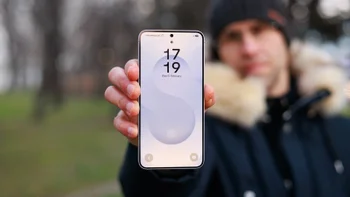
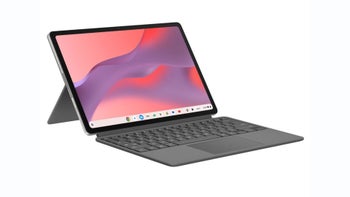

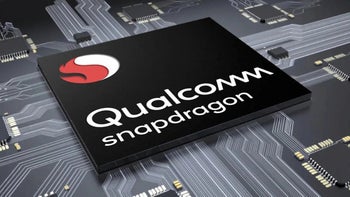

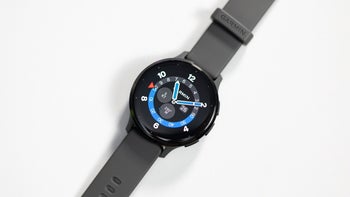
Things that are NOT allowed:
To help keep our community safe and free from spam, we apply temporary limits to newly created accounts: